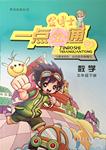题目内容
Now and again I have had horrible dreams, but not enough of them to make me lose my delight in dreams. To begin with. I like the idea of dreaming, of going to bed and lying still and then, by some queer magic, wandering into another kind of existence. As a child, I could never understand why grown-ups took dreaming so calmly when they could make such a fuss about any holiday, This still puzzles me. I am puzzled by people who say they never dream and appear to have no interest in the subject. It is much more astonishing than it would be if they said they never went out for a walk. Most people do not seem to accept dreaming as part of their lives. They appear to see it as an irritating little habit, like sneezing or yawning I can never understand this. My dream life does not seem as important as my waking life because there is far less of it, but to me it is important.
1. What is the author’s attitude toward dreaming?
A. He thinks it puzzling B. He likes it
C. He is interested in it D. He doesn’t accept it as part of his life
2. For the author of the passage, dreaming is________. .
A. another kind of existence B. an irritating little habit
C. a horrible but wonderful experience D. a true reflection of reality
3. The author of the passage suggests that people who say they never go out for a walk are_____ .
A. interesting B. unbelievable C. mysterious(难以理解的) D. lazy
4. The author of the passage enjoys dreaming most______. .
A. only when he was a child B. only when he is a grown-up
C. both as a child and as a grown-up D. only in his old age
5. Why does the author of the passage complain?
A. Because most people are overexcited about their dreams
B. Because most people are not interested in talking about their dreams
C. Because most people have had dreams most of the time
D. Because most people consider their dreams of to much importance
BACCB

 金博士一点全通系列答案
金博士一点全通系列答案